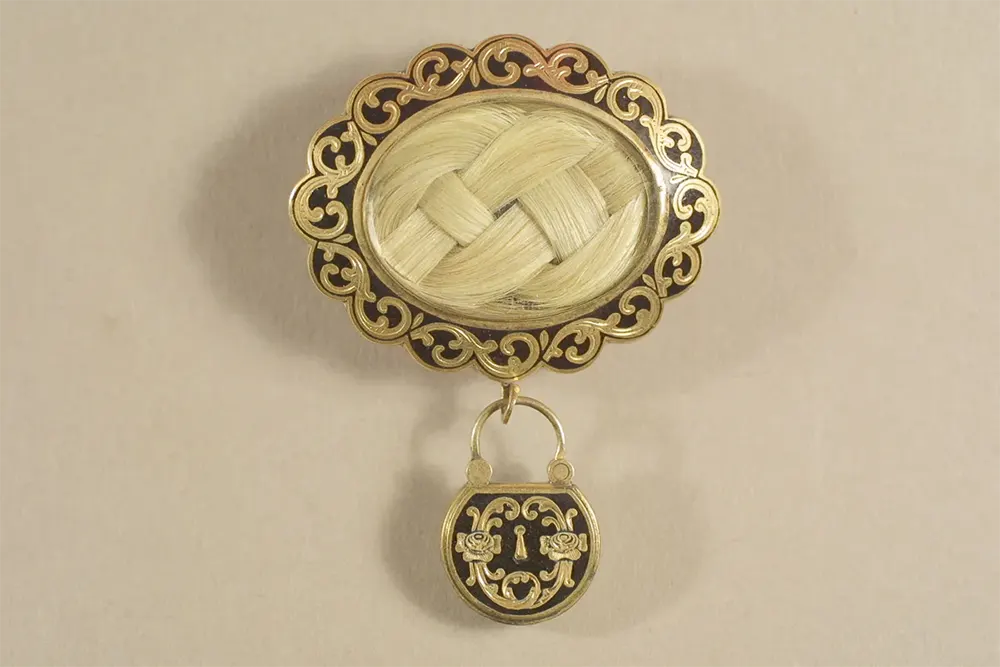
A gold and black mourning brooch with a plait of the deceased’s hair under glass.
Victorian mourning jewelry was popular during the late 1800s and was used as a tribute or memento to remind the wearer about their love for the person they had lost.
Death was a regular occurrence in Victorian times, thanks to pervasive diseases like cholera and scarlet fever. For this reason, the loss of a loved one was not a shocking event, but a sad part of everyday life.
The popularity of mourning jewelry reached its peak during the Victorian era (1837-1901). Queen Victoria was deeply in love with her husband, Prince Albert, and when he died in 1861, she fell into a long depression.
Queen Victoria spent much of the next four decades wearing black crepe dresses and mourning jewelry. She commissioned portraits, memorials, and busts of Prince Albert and other mementos that were reminders of her deceased spouse.
As Queen Victoria set the example for her court and was an admired public figure, wearing mourning jewelry became fashionable. Aristocrats and the wealthy commissioned lockets, bracelets, necklaces, and rings to memorialize their loved ones.
Common materials included jet, onyx, pearls, dark tortoiseshell, black enamel, bog oak, vulcanite, and gutta-percha (natural rubber made from the Southeast Asian tree).
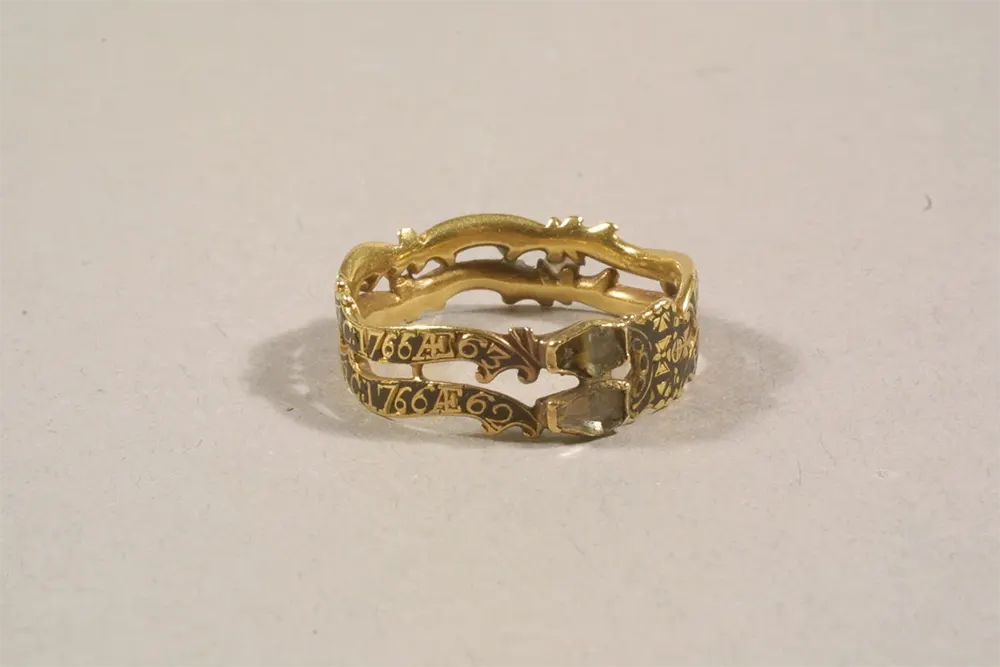
A gold mourning ring with black enamel, featuring two coffin-shaped bezels with faintly visible skeletons.
White enamel represented the death of an unmarried female virgin or a child. Children were sometimes remembered with pearls, which represented tears.
Turquoise meant ‘thinking of you’. Richer families set precious stones into the mourning jewelry created for their loved ones.
Beyond the usual jewelry materials, mourning jewelry contained some unique things. Hair was used to make everything from exquisitely detailed miniature scenes in jewelry, to braided chains to hold watches and pendants, and even large framed pieces of memorial art.
By the mid-1800s, England was importing 50 tons of hair a year to supplement that of the deceased due to the popularity of memorial jewelry and art.
A bit rarer to find in Victorian mourning jewelry, teeth also appear in some pieces – particularly rings. This was far less common than hair, and you rarely see these at auctions or antique stores.
Some pieces contain scraps of cloth or fabric, likely from the deceased’s clothing. Other designs incorporate tintype portraits or miniature paintings of the deceased.
This is common in lockets, where a photo or portrait might occupy one side of the locket and a lock of hair on the other side. Mourning brooches often included a place to keep a lock of hair or a special symbolic design.

A gold mourning ring featuring a painting on ivory of two women with a funerary urn.
Mourning jewelry may seem dreary to our modern sensibilities, but understanding the times when it was worn lends a different perspective. The average lifespan during the Victorian era was 40 to 45 years.
Europe was in a near constant state of war, and cholera, typhoid, smallpox, and scarlet fever were common killers. Approximately one in three children died before the age of five, and epidemics sometimes brought that number to one in two.
Simply put, death was a constant companion in the Victorian era. Mourning jewelry brought a little solace to the survivors who had to cope with frequent losses.
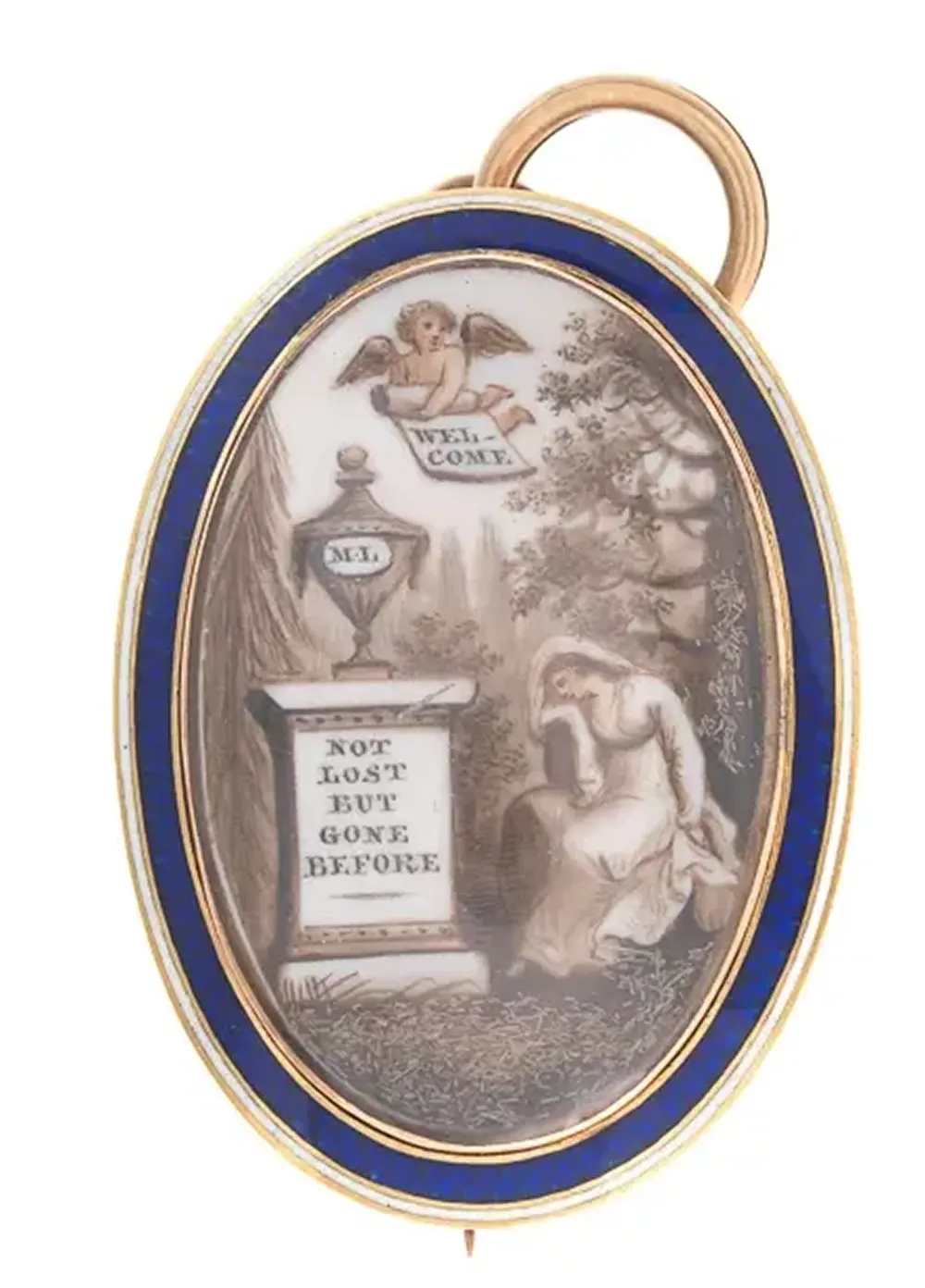
A mourning pendant with a miniature painting depicting a grieving mourner.
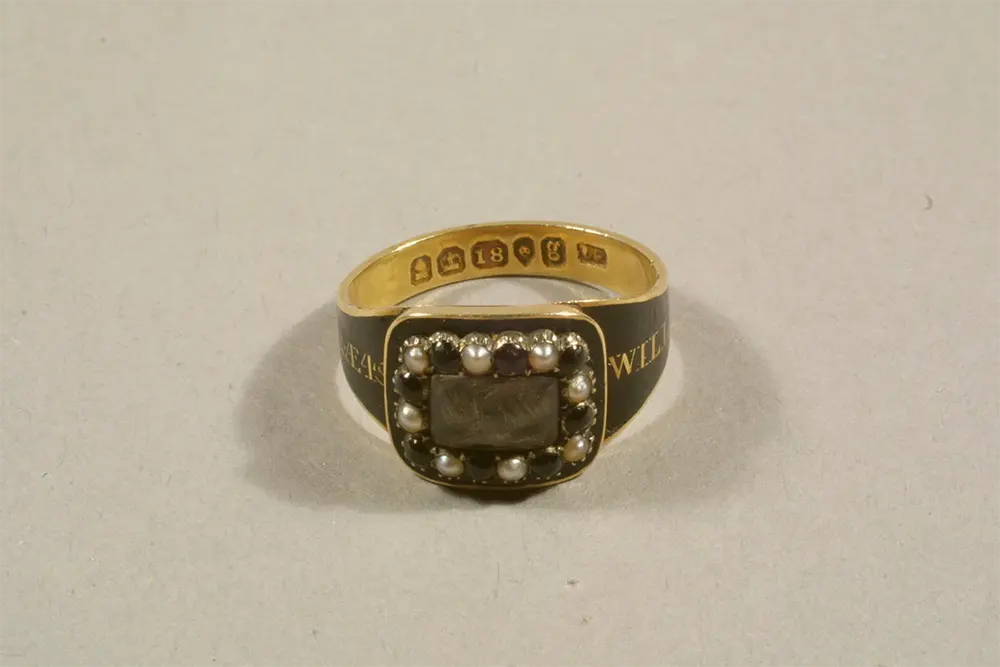
A gold and black mourning ring with a plait of the deceased’s hair set under glass.

A gold mourning brooch woven with the hair of the deceased and bearing an inscription of the name Julia.
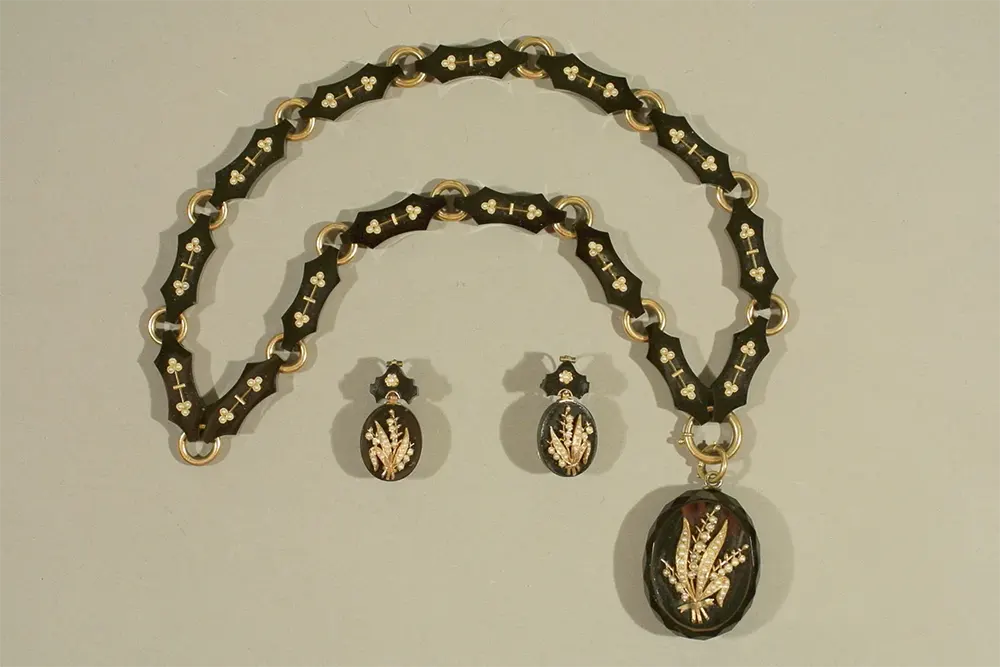
A set of onyx jewelry with gold and pearl depictions of sheaves of wheat.

A tortoiseshell comb with a gold foliate scroll design.

A gold mourning ring with a ruby and diamond and the initials EF in an Asian-style script.
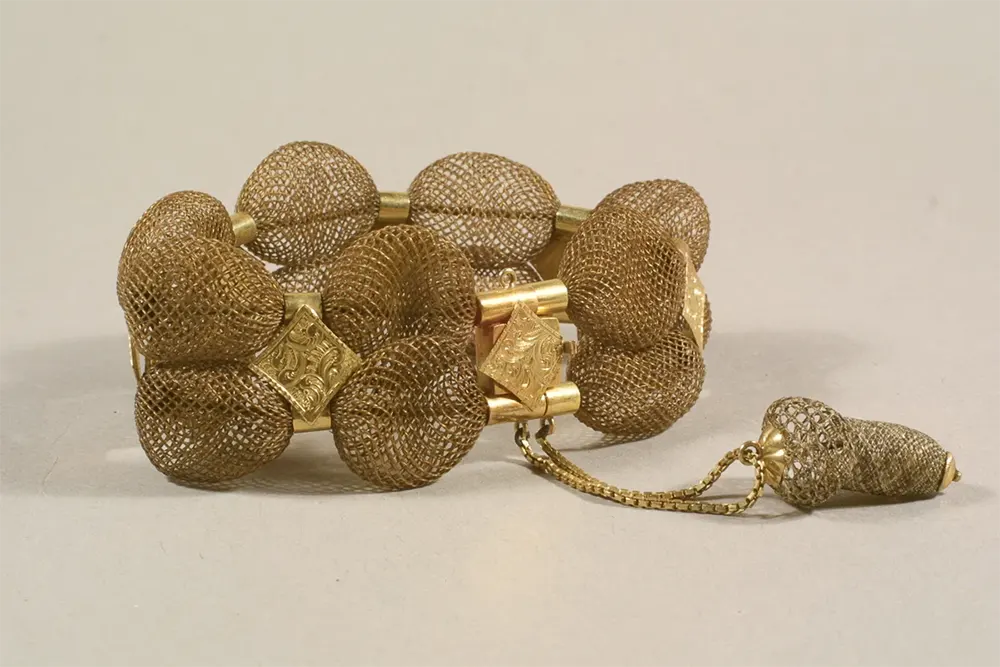
A bracelet made of brown table-worked hair with gold diamond findings.

Hair mourning locket.

Mourning Brooche.
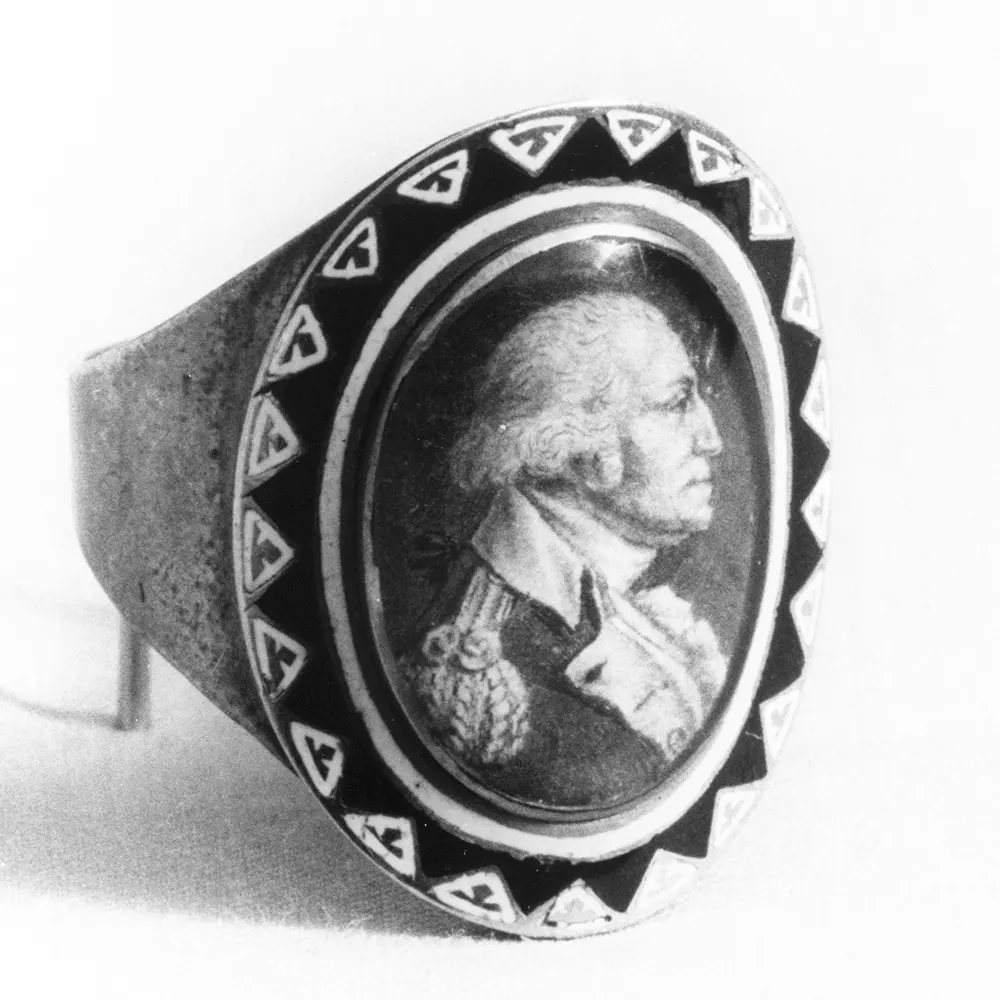
Mourning ring with an embedded image.

Victorian hair mourning jewelry.
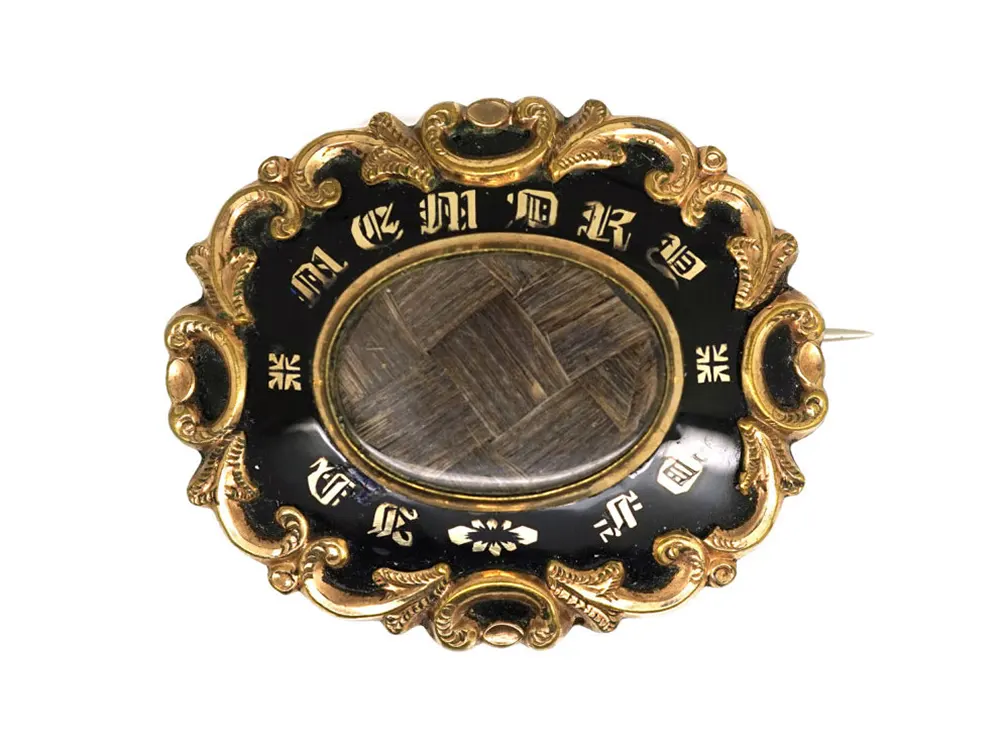
Victorian gold memorial brooch.
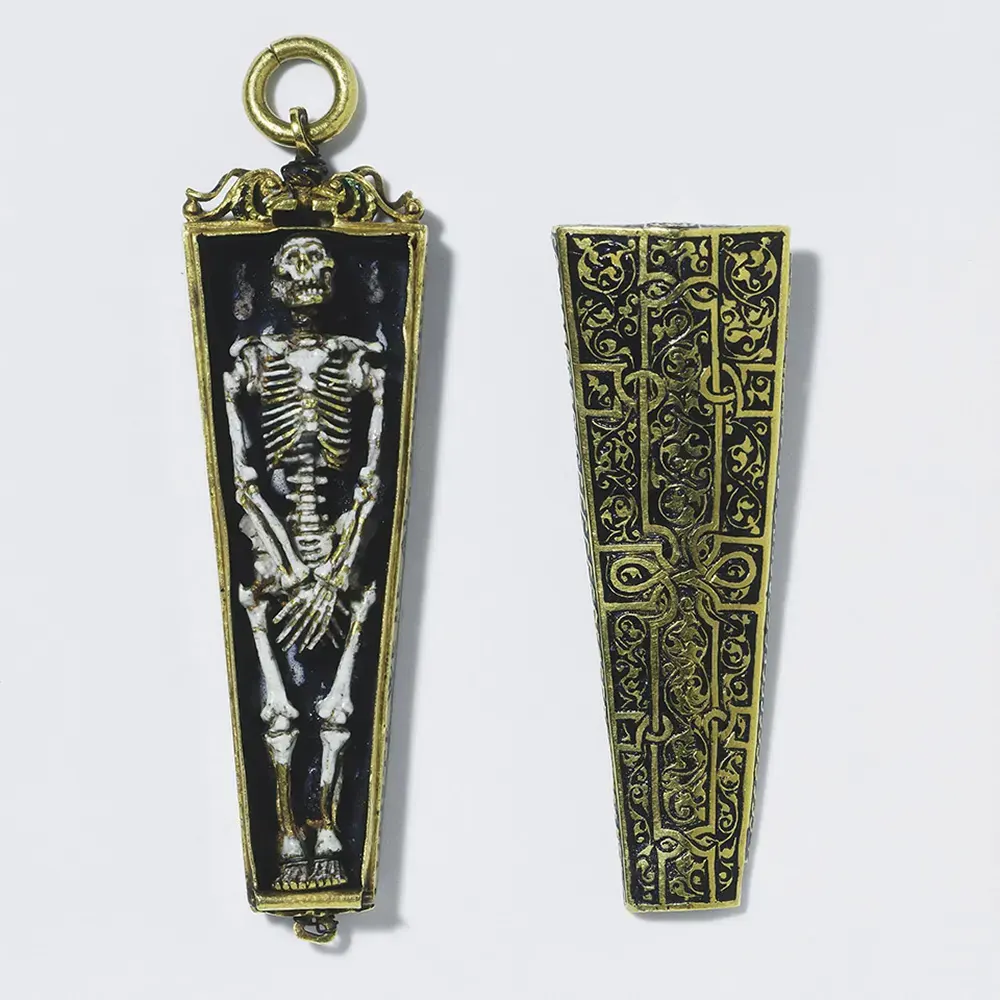
A memento mori pendant (circa 1540) found in England paints a vivid picture of mortality. The inscription, however, has a more solacing message: Christ’s resurrection redeems sins. (Photo: GIA).
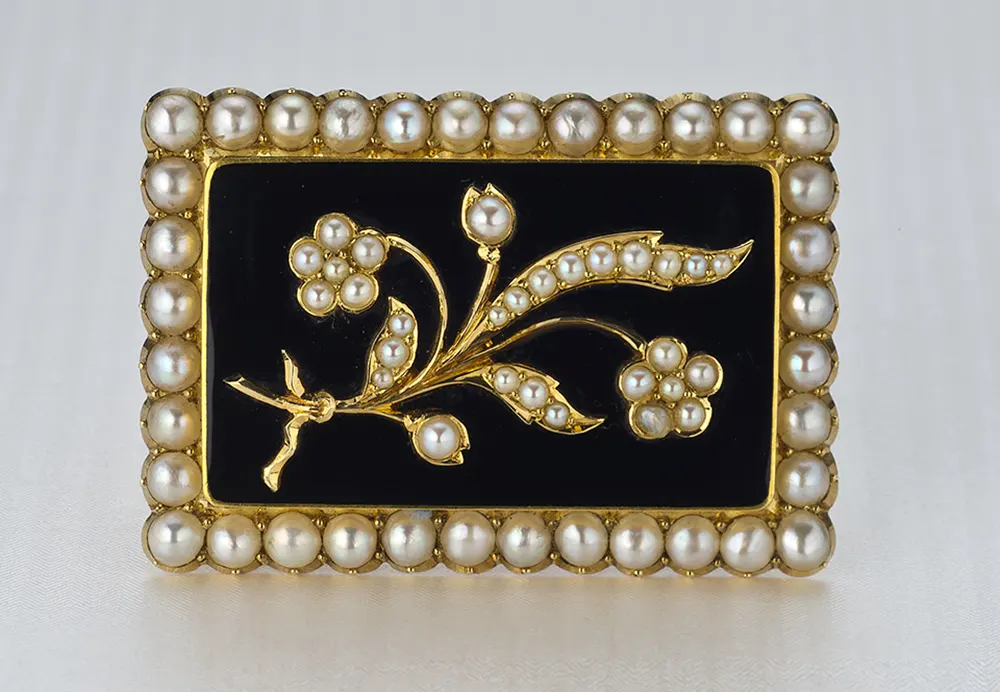
A pearl and black chalcedony Victorian mourning pin with a floral motif reflects a gentler view of death. Thirty-six natural pearls surround the pin and seed pearls adorn the flower petals and leaves. (Photo: Robert Weldon/GIA).

This Victorian watch fob opens to reveal plaited locks of human hair. The stone on its base is very dark, almost black. These features are typical of mourning jewelry. (Photo: Valerie Power/GIA).
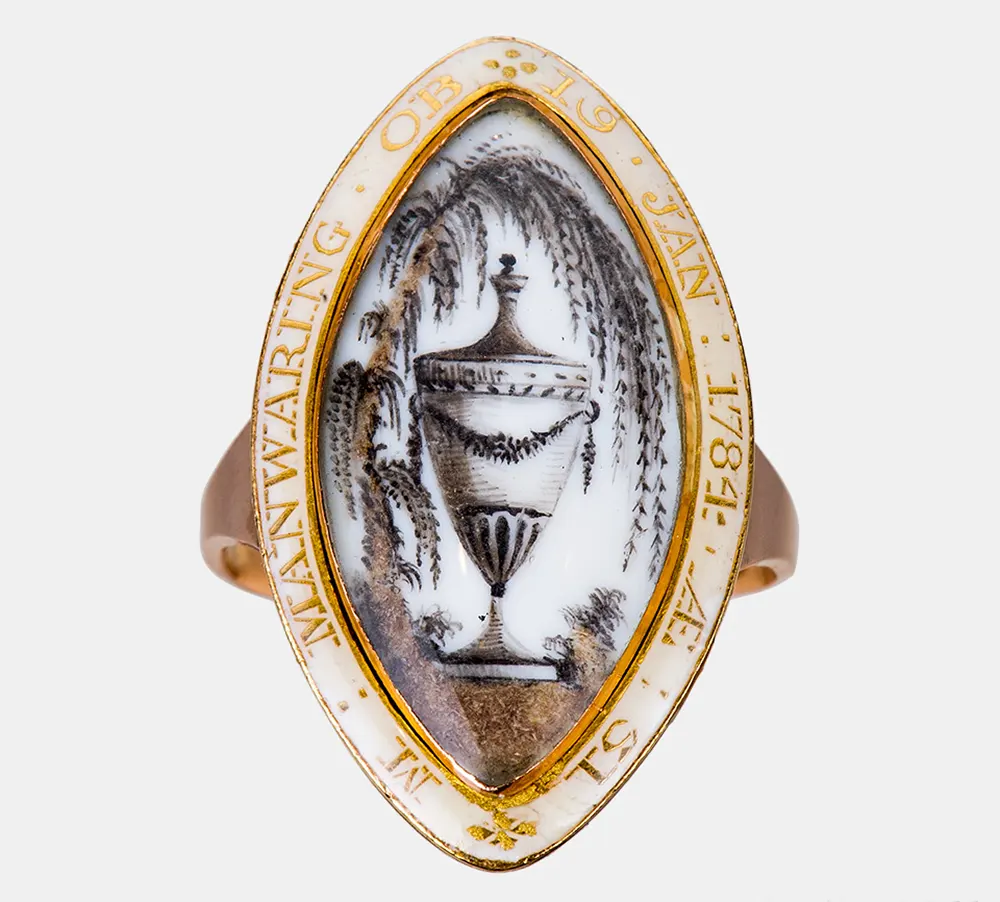
Although not Victorian, this late 18th Century, 18K gold memorial ring from the Georgian period incorporates small pieces of hair under the base of the urn and in the willow tree. The white enamel suggests the deceased was unmarried; the individual died on 19 January 1784 at the age of 51. (Photo: Kevin Schumacher/GIA).
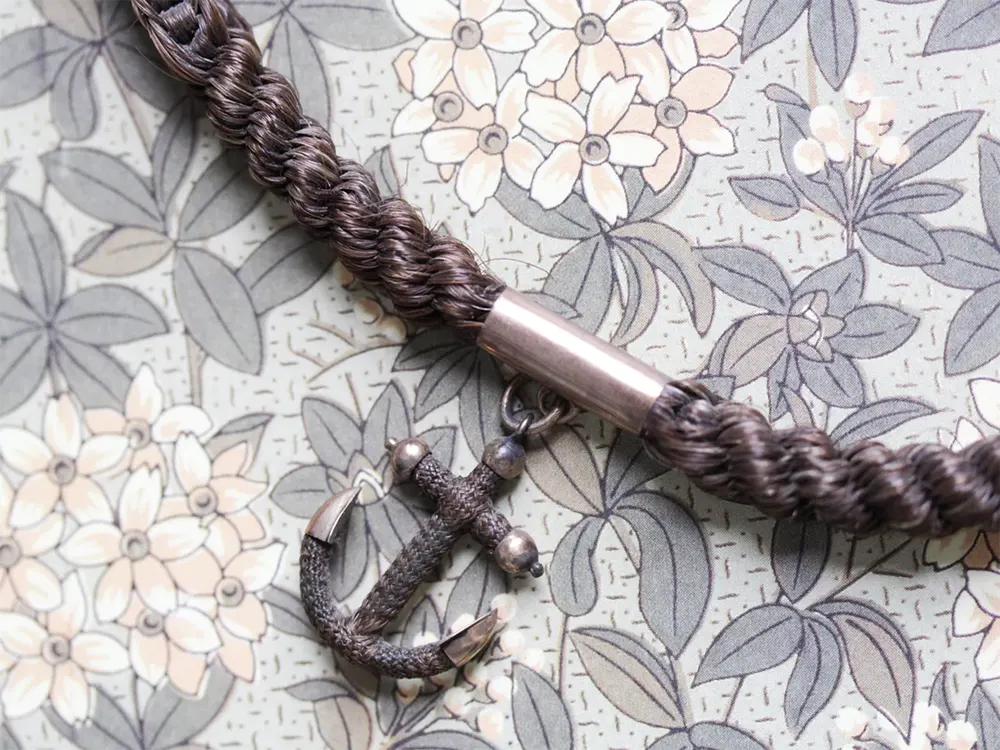
A finely woven hair necklace from the Victorian Era. (Photo: Market Square Jewelers).
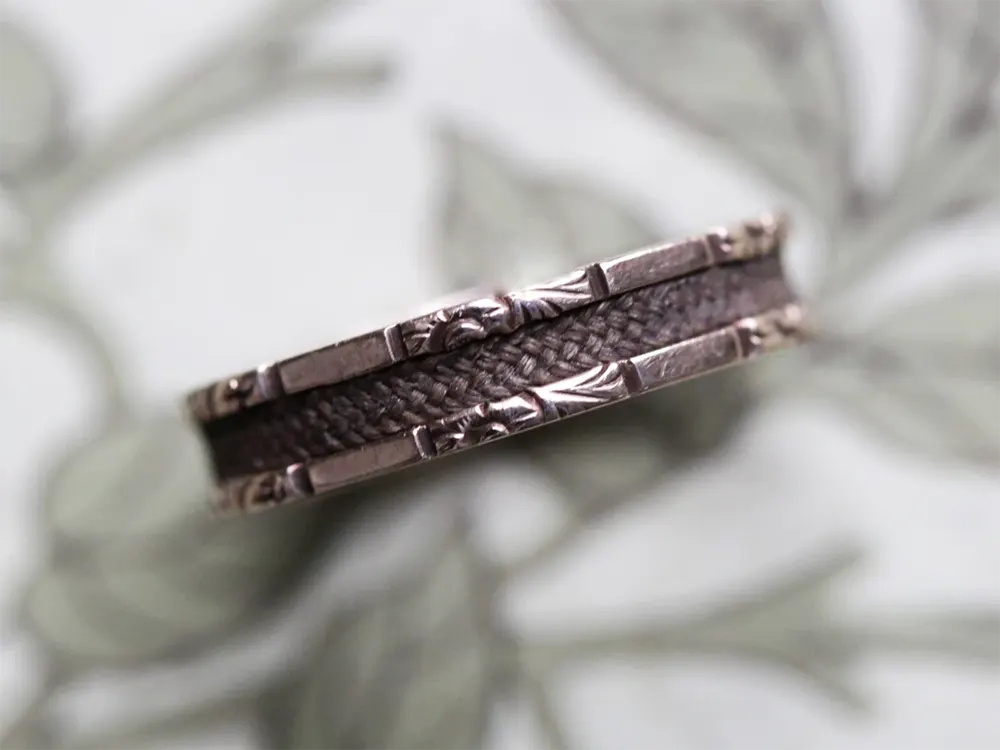
A miniature urn dangles from this gold mourning brooch. Photo: Market Square Jewelers).
(Photo credit: Historic New England / Gemological Institute of America (GIA) / Metropolitan Museum of Art / Wikimedia Commons / Victorian Mourning Jewelry: Unique History By Kate Miller-Wilson / The Antique Jewelry Company).